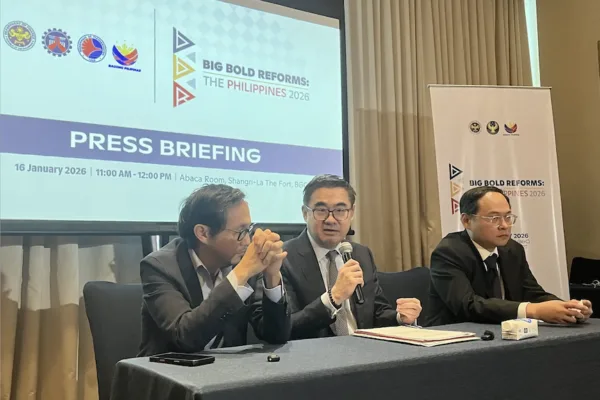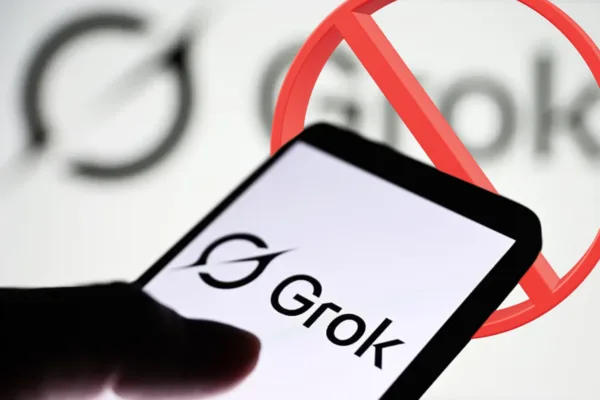by Jan Michael Carpo, Reporter
Ericsson kicked off its much-anticipated “Imagine Live 2024” roadshow in the Philippines, showcasing cutting-edge 5G technology solutions designed to accelerate the country’s digital transformation.
The event, held at the Rizal Ballroom of Shangri-La Hotel in Makati, provided an immersive experience on how 5G will drive the digitalization of both consumers and enterprises, positioning the Philippines for sustained economic growth in a rapidly evolving digital landscape.

Andres Vicente, Head of Ericsson MOAI, talks about the transformative power of 5G in helping PH
At the inaugural session, Andres Vicente, Head of Ericsson Southeast Asia, Oceania, and India (MOAI), emphasized the transformative power of 5G in helping the Philippines achieve its digital economy goals. “5G is an innovation platform for driving the digital transformation of businesses and society,” Vicente stated.
“Ericsson research shows that a 10% increase in mobile broadband adoption can boost GDP by up to 0.8%. We are eager to work with the Philippine government to strengthen digital infrastructure and drive economic growth through 5G,” he added.
Ericsson sees 5G as a game-changer for PH
5G’s potential to revolutionize industries, improve connectivity, and offer immersive experiences was central to the discussions. The technology promises faster download speeds, smoother video streaming, and more responsive gaming, while also paving the way for advancements in healthcare through telemedicine and improved access to education via remote learning.
For his part, Daniel Ode, Head of Ericsson Singapore, Philippines, and Brunei, highlighted the increasing accessibility of 5G in the Philippines.

Daniel Ode (left), Head of Ericsson Singapore, PH, and Brunei, tries on one of the latest 5G tech gadgets launched during the demo tour. With him is Alex Concepcion (right), Ericsson Phils. solutions architect
“More affordable 5G smartphones, a maturing ecosystem, and accelerated deployments will propel 5G adoption in the Philippines. By 2030, we expect over 40% of total mobile subscriptions in the country to be on 5G,” Ode said. “This investment in 5G will not only enhance service quality but also provide a competitive edge for the country in attracting foreign investments.”
Global trends and the local impact of 5G
The Ericsson Mobility Report, a key highlight of the event, underscored the global growth of 5G, with 1.9 billion 5G subscriptions as of mid-2024. The report also saw 5G subscriptions reaching a new high of 5.6 billion by the end of 2029, making up 60% of all mobile subscriptions worldwide.
In the Philippines, 5G adoption stands at about 9% of mobile subscriptions, signalling significant room for growth.
One key area of potential is Fixed Wireless Access (FWA), especially in rural areas where infrastructure for fixed broadband remains limited. According to an Ericsson ConsumerLab study, one in three households in the Philippines rely on mobile connectivity for home internet, which presents a strong case for 5G FWA.
Vicente reiterated the importance of early investments in 5G, stating, “The time to invest in 5G networks in the Philippines is now. This technology will be critical in accelerating enterprise digitalization and in transforming consumer experiences, thus giving the country a competitive edge.”

Andres Vicente (right), Senior Vice President and head of MOAI (Ericsson), while trying out one of the Virtual Reality (VR) devices, one of the 5G technologies introduced during the live demonstrations.
Demo tours highlight real-world 5G use cases
The roadshow was divided into four zones, each dedicated to demonstrating the real-world impact of 5G on consumers and businesses.
In the “Capture the Value of 5G for Consumers” zone, attendees experienced how 5G could revolutionize sports with an “Immersive Sports Fan” demo. This feature-rich app allows sports clubs to engage with fans, creating new revenue streams through network slicing and APIs. Another demo, “Superior Uplink for Livestreams,” showcased how smart glasses could enable seamless, real-time livestreaming by boosting upload speeds through Uplink Carrier Aggregation.
The “Capture the Value of 5G for Enterprises” zone focused on industries such as mining, wind farms, and oil refineries, highlighting how 5G could enhance worker safety and efficiency. Partnering with RealWear and OverIT, Ericsson demonstrated how 5G-enabled smart devices provide secure, real-time access to complex data in hazardous environments.
Additionally, the “Connected Vehicles” demo explored the potential of 5G to revolutionize transportation through enterprise-grade connectivity.
The “Programmable Networks” zone illustrated how Ericsson is transforming mobile networks with Service Level Agreement assurance, enabling communications service providers (CSPs) to offer premium 5G experiences. The new software toolkit showcased advanced RAN and Core capabilities, helping CSPs differentiate their services in a competitive market.
In the “Shape Our Future Together” zone, Ericsson demonstrated high-bandwidth use cases with partners like Toyota and Sony, emphasizing the company’s leadership in 5G monetization. The “Teaching with Technology” program highlighted how virtual reality and ICT learning tools can transform education, engaging students through immersive experiences. Over 1,000 teachers from nine public high schools in the Philippines are already participating in this initiative.
Commitment to the Philippines’ digital future
With over 36 years of presence in the Philippines, Ericsson reaffirmed its commitment to supporting the government’s digital agenda. The company is positioned to help CSPs seamlessly transition to 5G, backed by its extensive global deployment experience and technological leadership.
Ericsson currently powers 166 live 5G networks across five continents, with more than 320 commercial networks in operation globally.
As the Philippines continues its journey toward becoming a fully digital economy, Ericsson remains at the forefront, ensuring that 5G plays a pivotal role in the country’s growth and development.








